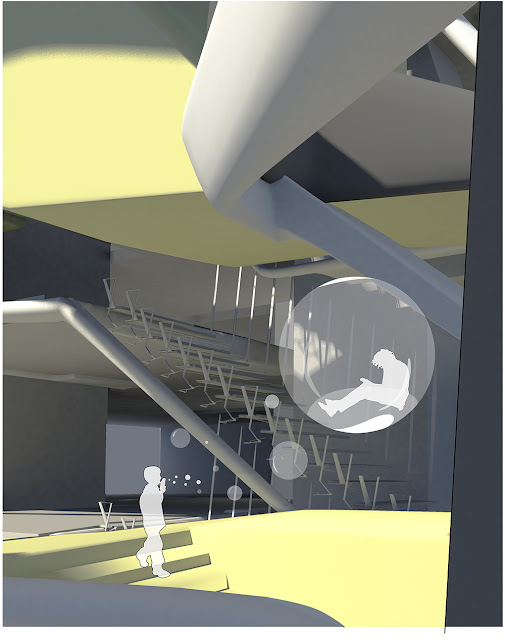Conceptualizing
an urban intervention in an aged area like Mar Mikhael does not signify a reinterpretation
of past shadows. One could easily fall into the trap of recreating what was
once there, neglecting what the area now starves for. The main design approach should be sensitive to certain elements
of the site such as parameters on the micro and macro scales; a program that
reflects the needs of Mar Mikhael which are elsewhere available within Beirut.
Mar Mikhael became the receptor of young artisans who have a lot to give.
 |
| 3 main elements: cars / souk / commercial uses |
From this perspective, we are
designing as to point out the dynamism of an area full of memories. From kids
laying down stones on an empty lot to make their own football court to
activists settling down creating a base to send out their message, the area is
interactive on many levels, this is why we decided to create an "Urban
Stage". Here you are always seeing and being seen, the ambiance is
amiable, generations merge together creating harmony within the beat of the
city.
Someone once said "you can't
learn music from Books, it's out there". Extending the flow of people into
the site is eliminating boundaries on various directions. The need to open up
to the port and break the monotonous agglomeration of Mar Mikhael's city fabric
seemed almost inescapable.
Through
the intertwining of circulatory pathways, both pedestrian
and vehicular flows start blending
and revive the urban fabric related to the city of Beirut; instead of only
being concerned with the ephemeral
nature of the local diverse building
typologies.
“ Architecture will change but people will never stop
moving ”
 |
| park view |
 |
| circulation + public spaces |
 |
| programmatic distribution |
 |
| mass plan |
 |
| ground floor plan |
 |
| first floor plan |
 |
| second floor plan |
 |
| the "worm" at night and day time |
 |
| the library |














































